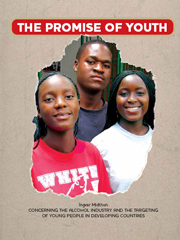
EU Process leads to alcohol strategy
Based two reports and an extensive consultation process the European Commission on October 24 adopted a Communication setting out a strategy to support Member States in reducing alcohol-related harm.
UK adults and adolescents are among the top binge-drinkers in Europe, according to a comprehensive report on alcohol.
As part of the Health information and knowledge system under the EU Public Health Programme, the European Commission put out a call for tender for a report on alcohol use in Europe, which was contracted to the Institute of Alcohol Studies in London. Another report, on economic aspects of alcohol was prepared by another consultancy (Rand). Based on these documents and an extensive consultation process the European Commission on October 24 adopted a Communication setting out a strategy to support Member States in reducing alcohol-related harm.
The main message of the report – commissioned to provide the evidence base for the EU’s alcohol strategy – is the scale of alcohol-related harm across the EU:
- Alcohol is public health enemy #3, behind only tobacco and high blood pressure, and ahead of obesity, lack of exercise or illicit drugs.
- Many people suffer due to someone else’s’ drinking – including 5-9 million children living in families damaged by alcohol and the 10,000 ‘innocent’ deaths that occur to bystanders or passengers from drink-drivers.
- Alcohol is also estimated to cost Europe €125 billion – equivalent to over €650 for every household each year.
The report or parts of it may be dowloaded from The Public Health Portal of the European Union.
The other report, contracted by the Commission to RAND Europe contributes to the Commission’s impact assessment of a proposed Communication on alcohol policy. This report has focused exclusively on the economic impacts of DG SANCO’s options in regard to an alcohol harm reduction strategy for the European Community. It examines the nature and extent of the problem posed by alcohol use in Europe, which provides the rationale and focus for the associated policy initiative. Next, it develops a conceptual approach that discusses how alcohol use is linked to macroeconomic development. This approach is then used to examine the future impacts of a successful alcohol policy on a number of macroeconomic aspects. The results of this examination are then applied to a comparison of the four policy options. The report concludes with a chapter on monitoring and evaluation, and ends with conclusions and recommendations.
The report may be downloaded from the EU site in PDF-format
Based on these documents and an extensive consultation process the European Commission on October 24 adopted a Communication setting out a strategy to support Member States in reducing alcohol-related harm. The priorities identified in the Communication are to:
- protect young people and children and the unborn child;
- reduce injuries and deaths from alcohol-related road accidents;
- prevent harm among adults and reduce the negative impact on the workplace;
- raise awareness of the impact on health of harmful alcohol consumption; and on appropriate consumption patterns
- Develop a common evidence base at EU level
Further information about the EU Alcohol strategy can be found on the EU Public Health site
![]()
![]()
Developed with CustomPublish CMS by Nettinfo AS




